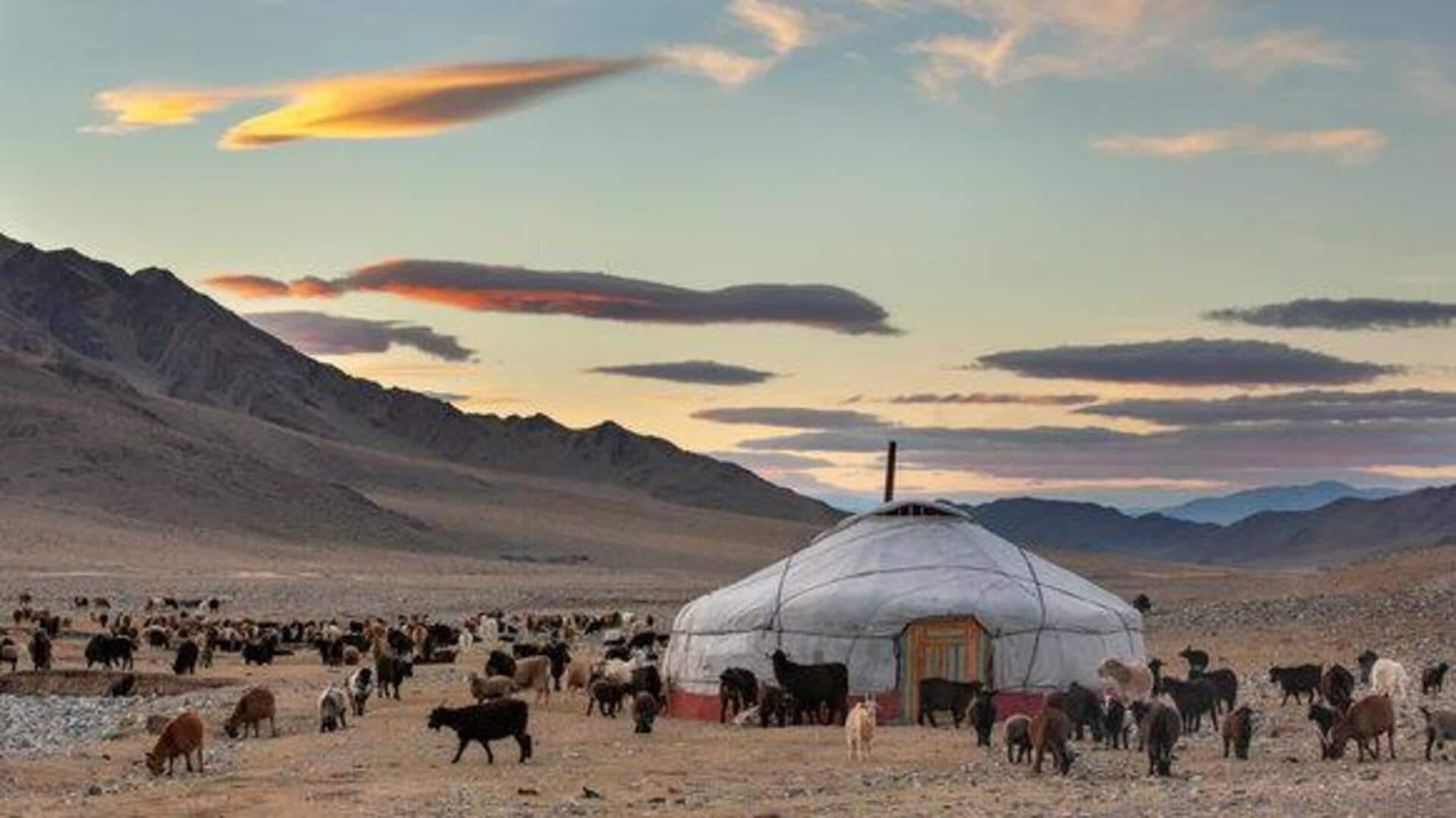
Steppe adventures: Embracing the ancient art of yurt living
What's the story
Living in nomadic yurts offers an unparalleled opportunity to experience the traditional lifestyle of nomadic communities in the steppes. This article delves into the experience of staying in authentic yurts and engaging in daily activities for a truly transformative cultural experience. It provides practical tips on how to embrace and make the most of this ancient way of life.
Basics
Understanding yurt construction
A yurt is a traditional round tent used by nomadic Central Asians. Its structure consists of a collapsible wooden frame covered with felt or skins. This design is a masterpiece of nomadic ingenuity, combining simplicity with functionality, and honed over centuries. Yurt-building workshops provide travelers with the opportunity to actively participate in the construction process, fostering a deeper understanding and appreciation for this nomadic architectural marvel.
Routine
Daily life and activities
Life in a yurt means embracing the nomadic lifestyle's heartbeat. Mornings start early with a focus on animal care, particularly the beloved horses. Key experiences involve milking goats, making traditional cheese, and of course, honing your horseback riding skills. These activities serve as more than survival lessons; they're a gateway to a profound connection with nature.
Food
Traditional cuisine experience
The diet in a nomadic setting is mostly vegetarian as it relies heavily on dairy products and grains. Travelers can discover traditional dishes like bortsok (fried dough), kumis (fermented mare's milk), and various cheeses crafted from goat or cow's milk. By getting involved in food preparation, you can experience the true flavor of nomadic cuisine while adhering to your dietary preferences.
Interaction
Cultural exchange opportunities
One of the most fulfilling experiences of yurt life is the opportunity to connect with local communities. Through language lessons, storytelling sessions, and music evenings around the fire, travelers can delve deep into the fabric of the culture. These exchanges go beyond language learning, offering a window into the rich history, values, and traditions that define nomadic life.
Conservation
Environmental awareness tips
Nomadic cultures possess a deep reverence for their environment, having practiced sustainable living out of necessity for millennia, long before it became a buzzword. Travelers will gain practical skills in resource management — learning everything from water conservation techniques in the desert to understanding sustainable grazing practices essential for livestock management — and return home with a newfound appreciation for the environment.